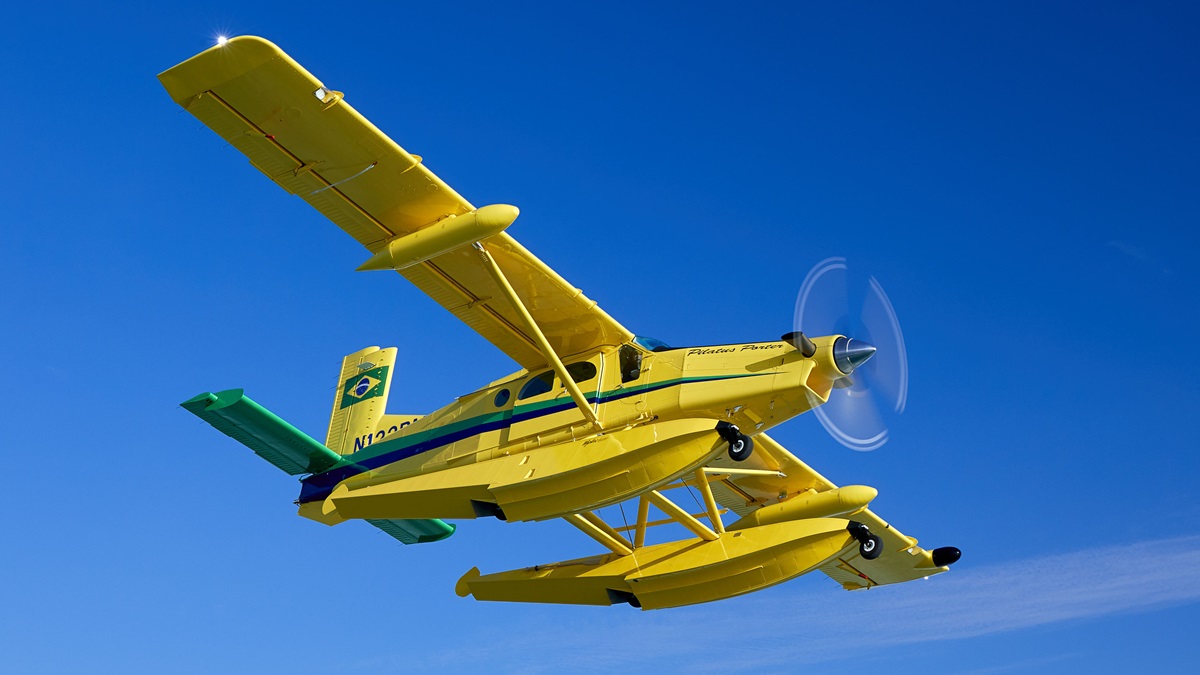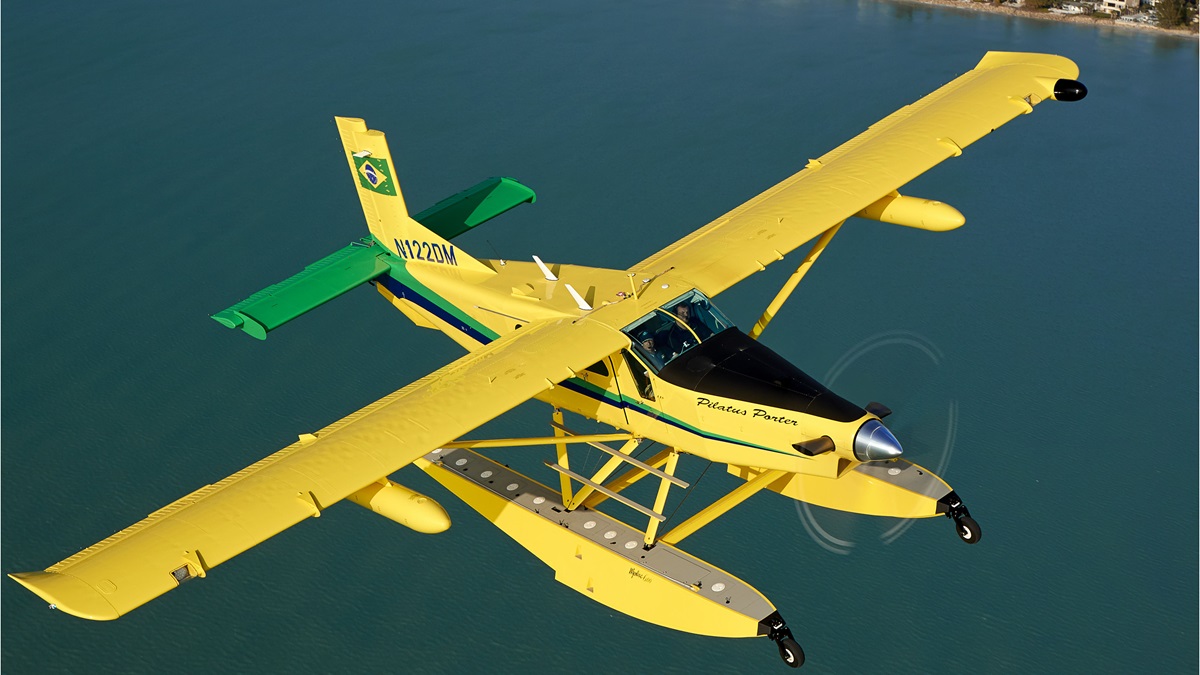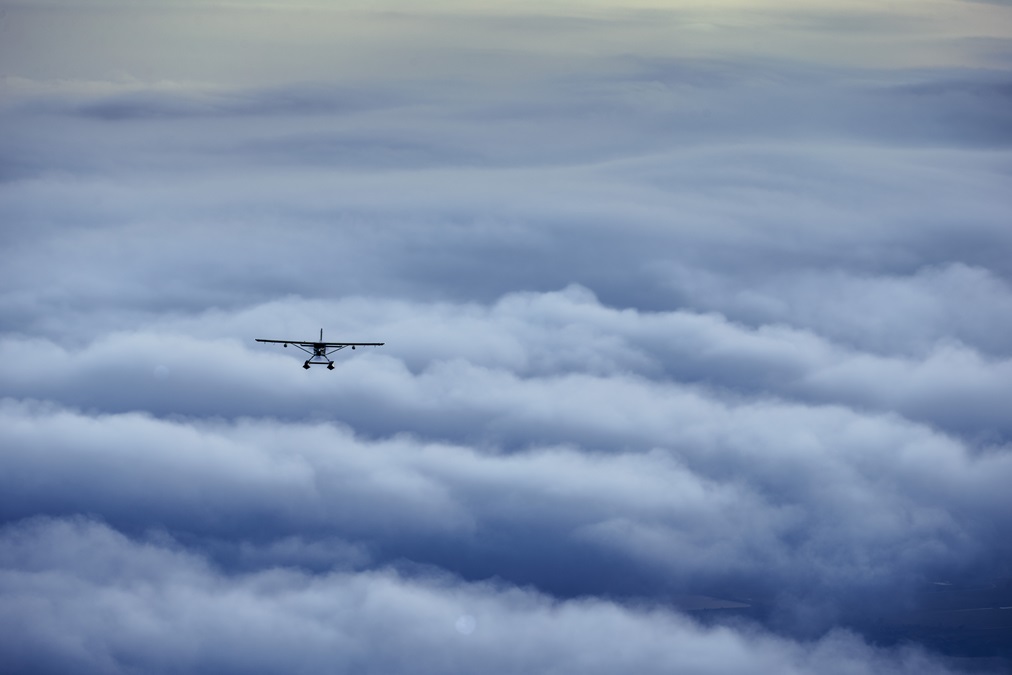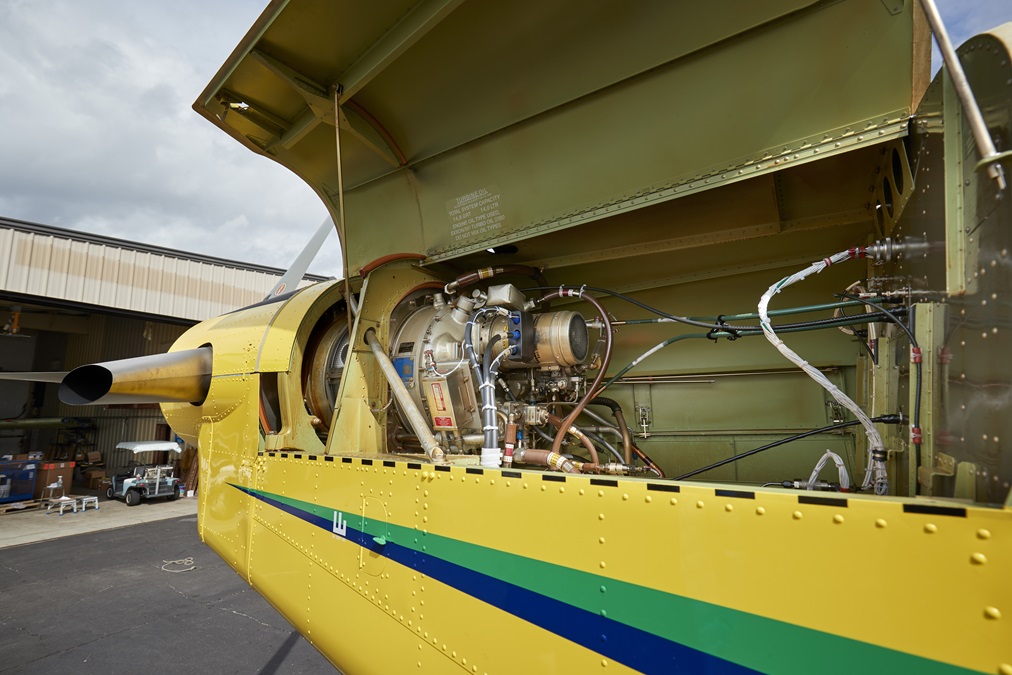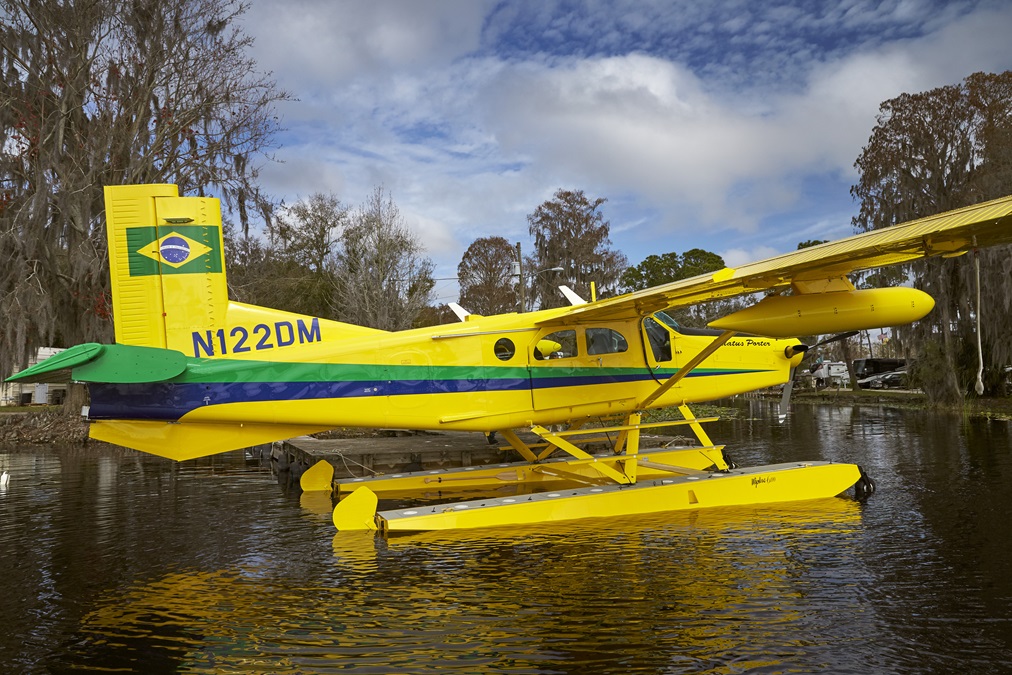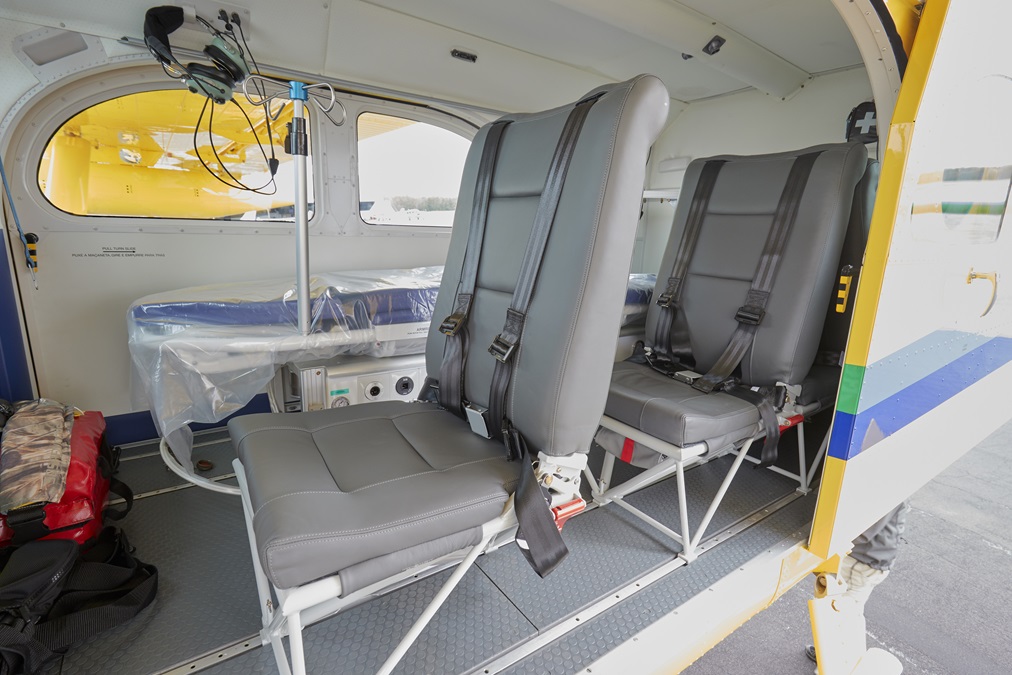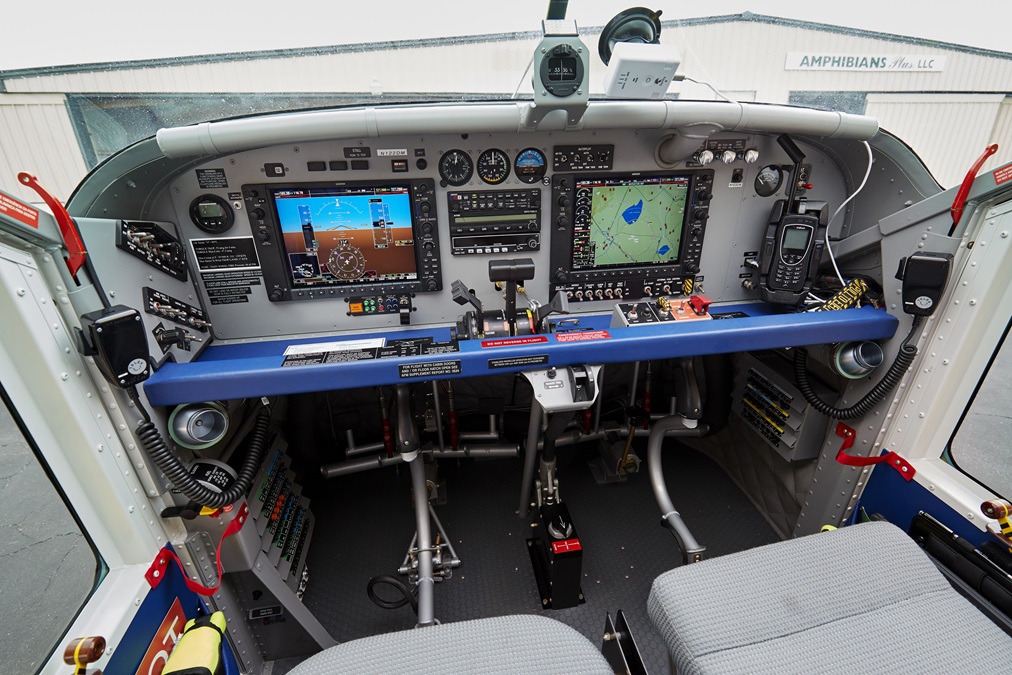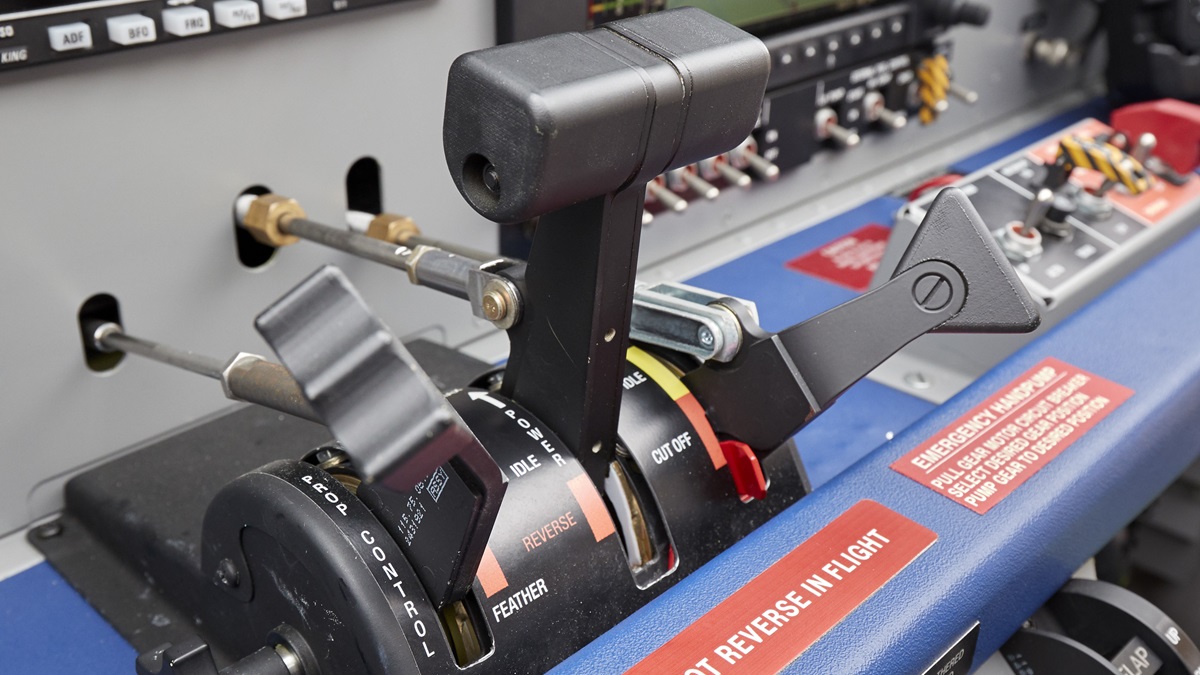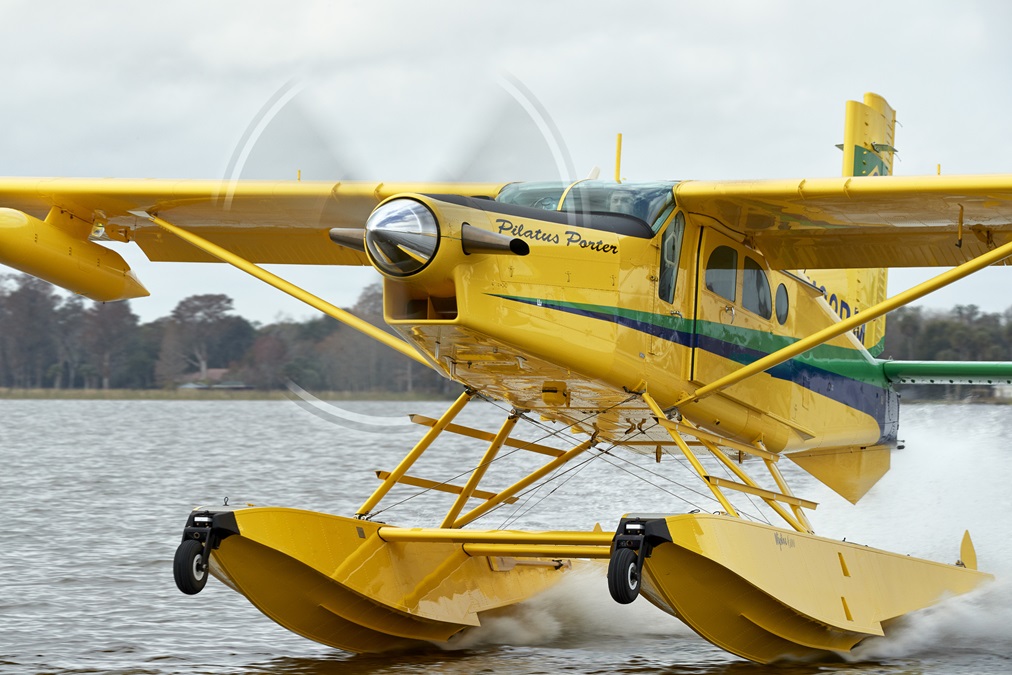A flying Swiss Army knife
The many faces of the Pilatus PC–6 Porter
The Porter is going out the way it came in—with little notice or fanfare. Just a vague sense of wonder that such an ungainly aardvark of an airplane ever came to be in the first place. Or that, once it became a reality, it actually performed the various Herculean feats that it did—or lasted as long as it has. The Porter’s most impressive and enduring mark was landing on a glacier in Nepal at an elevation of 18,865 feet and then taking off again—a fixed-wing altitude record set in 1960 that’s still on the books today.
“I find it to be a completely honest airplane that does without complaint just about anything you ask it to do,” said Cedric Gitchenko, a Swiss corporate pilot who flew one of the final Porters from Europe to the United States this year. “It’s not fast, but it’s rugged and reliable. It’s got great flying qualities, tremendous endurance, and I feel totally comfortable flying it across the North Atlantic, over mountains, or landing on glaciers. Its capabilities are quite unique.”
Once in the United States, the Porter—owned by a nonprofit foundation—was fitted with Wipaire amphibious floats. Next, it will go to Brazil, where it will serve as an air ambulance in a remote region of the Amazon. There’s a stretcher in the back, a no-frills rubber floor, and several utilitarian seats for medical staff.
This airplane is meant to help people in need, as are other Porters operated by missionary organizations around the world. They’re also popular among skydivers, extreme skiers, and scenic tour operators—but these airplanes aren’t saints.
Porters also have a long and decidedly mixed military and paramilitary record. In the U.S. Air Force, a license-built version of the Porter known as the AU–23A was fitted with a 20 mm Gatling gun and ironically renamed the Peacemaker. The United States sent 15 Peacemakers to the South Vietnam Air Force in 1971, where they arrived far too late to make any peace. Those that survived the war were sent to Thailand, the last few just as Saigon fell. The U.S. Air Force evaluated the AU–23A for its own use but ultimately rejected it for combat because—surprise!—it was slow, unarmored, and vulnerable to just about anybody with a weapon.
Air America, a CIA contractor, used Porters for many years to shuttle people and supplies to and from remote areas as well as providing airborne communication relays. In the 1990 Hollywood movie Air America, a Porter provides the best moment of that otherwise forgettable film when it upstages actors Mel Gibson and Robert Downey Jr. with an impressive hillside landing.
No drag shortage
My introduction to the Porter came in Central Florida where Gitchenko was preparing the airplane and its newly installed floats for its upcoming ferry flight to South America.
The towering airplane’s flawless yellow and green paint scheme in the pattern of the Brazilian flag would have been fitting for that country’s Smoke Squadron aerobatic team of Embraer Tucanos. But the Porter’s crude, slab-sided shape shows it’s no aerobat, and exposed rivet heads of many sizes resembled a bad case of acne.
The Porter’s impossibly long and pointy snout contains a 620-horsepower Pratt & Whitney PT6A-27 engine, and the airplane’s conical nose contrasts with a boxy fuselage and sliding doors (on both sides) that could have come off a Chrysler Town & Country. A pair of torpedo-shaped fuel tanks (64 gallons each) hang under the wings.
Each aileron has a counterweight the size of a broom handle protruding downward. The straight vertical stabilizer and rudder are conventional but appear mismatched since the rudder counterweight above the vertical fin only covers half its length. The feng shui is all wrong.
Boarding the airplane is like climbing a jungle gym. Two indented steps on the side of the Wipline 6100 floats allow you to stand on the sandpaper top. Then two more steps on the struts lead to the cockpit side doors which, delightfully, are mostly Plexiglas. Step inside the broad cockpit, slide into the left seat, and secure the four-point harness.
“I find it to be a completely honest airplane that does without complaint just about anything you ask it to do.” —Cedric GitchenkoThe panel is dominated by a pair of 10.4-inch Garmin G950 glass-panel displays that are identical to G1000s but lack an integrated autopilot. Engine controls are on a pedestal at the center of the panel (like a de Haviland DHC–2 Beaver) and gauges, switches, and circuit breakers are logically laid out.
Engine start is normal for a PT6A, and noise-cancelling Bose A20 headsets make Gitchenko’s lightly accented directions easy to understand.
There’s a 12-knot breeze blowing from the east and the lightly loaded airplane (three people and 90 gallons of fuel) is rock solid as we taxi to Runway 9 Left at Bartow Municipal Airport. Pretakeoff checks are normal and we set half flaps (20 degrees) before starting the takeoff roll.
Acceleration is moderate with 1,450 foot-pounds of torque, and we reach the rotation speed of 55 knots after a ground roll of about 800 feet. Moderate back-pressure gets the nosewheels off the ground, and we accelerate to 80 knots in a 12-degree nose-up attitude.
The landing gear takes about one minute to fully retract as four lights on the gear position system gradually change from green to blue. Then I raise the electric flaps and we climb at 1,000 feet per minute at 90 KIAS.
Control forces are moderate and well balanced, and visibility is outstanding—especially downward, thanks to the clear doors. There’s hardly any distortion, even at the edges of the curved windshield.
Stalls are laughably benign and they’re preceded by pronounced aerodynamic buffeting as well as piercing aural warnings. Unaccelerated power-off stalls take place at 60 KIAS with the Fowler flaps up, and 48 KIAS with them fully down. Accelerated and turning stalls require so much back-pressure on the stick at normal elevator trim settings that a pilot would have to be juiced to have both the physical strength and mental cluelessness to perform one inadvertently.
With the three-blade, fully reversible propeller at high rpm, even small adjustments of the power lever bring crisp acceleration and deceleration.
“Slowing down is never a problem in a Porter. There’s no shortage of drag on this airframe.” —Cedric GitchenkoGitchenko advises 75 knots and 20 degrees of flaps on approach to a normal water landing, and the speed is easy to hold as we approach the wavy surface of Lake Hancock. We round out and hold a 7.5-degree nose-up attitude as the floats skim the choppy surface, then wipe off the power, hold full back stick, and let the airplane settle in.
A single lever between the front seats lowers the water rudders, and water steering is positive and authoritative. Taxiing downwind, we feather the prop to reduce our forward speed and keep water from splashing over the front bumpers of the floats. I’m curious about the lake’s depth, and Gitchenko glances at the sonar; its digital readout shows the water is 24 feet deep.
We turn into the wind, raise the water rudders, and start a takeoff run. Full back stick and 1,450 foot-pounds of torque gets the Porter on the step in about 4 seconds, then neutral elevator keeps the pitch at its optimum 7.5-degree nose-up attitude as it accelerates. Light back-pressure and full left aileron easily raises the right float out of the water at 45 KIAS, and the Porter accelerates in ground effect then climbs out at 75 KIAS. The takeoff run from start to finish takes about 14 seconds under these nearly ideal conditions at sea level.
After several more splashdowns, we return to the airport for hard-surface landings. An approach speed of 75 KIAS on final seems to work well regardless of flap settings, and Gitchenko says he prefers using no flaps and an approach speed of 100 KIAS to fit in with faster traffic at big airports.
Unlike tailwheel Porters that require precise timing and proper landing technique, the floatplane version is tremendously forgiving on four main wheels and a wheelbase as broad as Texas. Pulling the prop lever into flat pitch, or reverse, makes for jarring and noisy deceleration.
“Slowing down is never a problem in a Porter,” he says. “There’s no shortage of drag on this airframe.”
Swiss Army knife
Throughout its long production run, the Porter has proven itself to be a flying version of the Swiss Army knife: a multipurpose tool that fits a dazzling variety of uses. Some purposes are noble, others are nefarious. But they reflect the values of the owners and operators—not the Porter itself. It’s a blank slate.
On the subject of value, that’s where the Porter seems to come up short in today’s marketplace. It costs about as much as a Quest Kodiak or Cessna Caravan—two similar-sized turboprops that also are available on amphibious floats—but the Porter isn’t as fast and can’t legally carry as much payload. In the field, the Porter is widely known to regularly carry far more than its stated 2,000-pound payload—but that’s another discussion.
On the ground, the Porter is unapologetically ugly. Nothing about it is aesthetically pleasing, or even symmetrical. Inside the airplane, however, its form and function are an elegant match. It’s spacious, sturdy, and made for hard, unglamorous work in austere places. The flat, rubber-matted floor, for example, can be hosed clean and the water simply runs out through a plug on the side of the fuselage.
Flying the Porter on a photo mission, I was amazed at the airplane’s precision and grace. It’s responsive, obedient, and confidence-inspiring in flight—and its enduring appeal suddenly makes sense.
Think of the Porter as a supersized turbine successor to the Feiseler Storch, a pioneering, no-sacrifices German design that showed the Luftwaffe just how useful a fixed-wing STOL airplane could be. Just like the Porter, the Storch was used for good and ill. (A Storch operated by Nazi commandos landed on a mountaintop at Gran Sasso, Italy, in 1943 to rescue fascist dictator Benito Mussolini—although his reprieve lasted just 15 months. Alternatively, a pair of Swiss pilots used ski-equipped Storches in a daring mountain air rescue in 1946 shuttling downed U.S. airmen off a snowy glacier.)
If past is prologue, the roughly 300 Porters currently flying around the world will continue performing both heroic and inglorious feats for decades to come. Pilatus is still making Porter parts, and these airplanes have already shown they have staying power.
Email [email protected]

